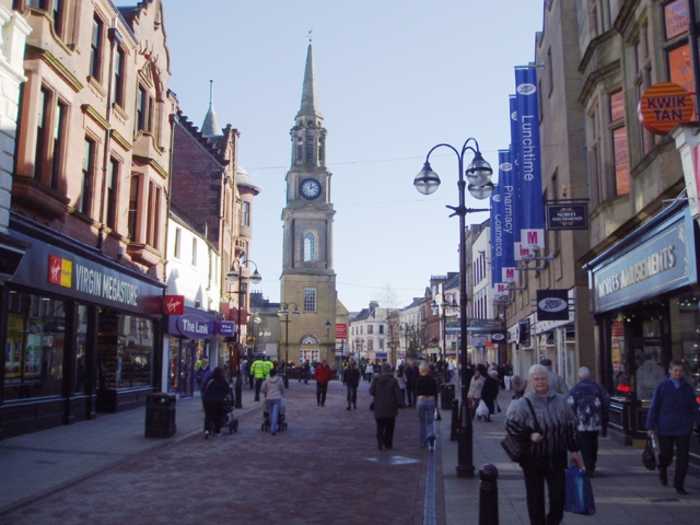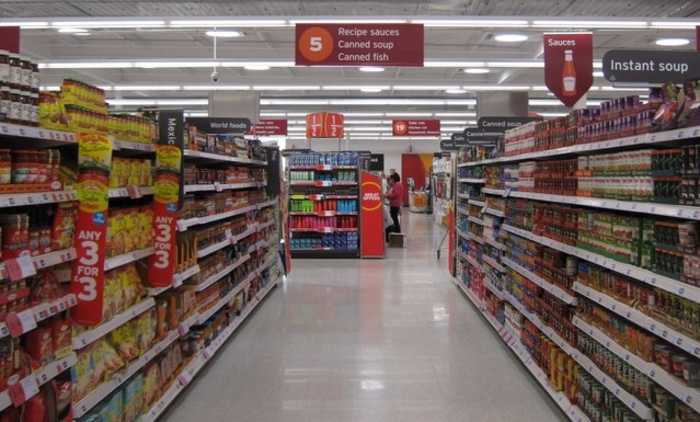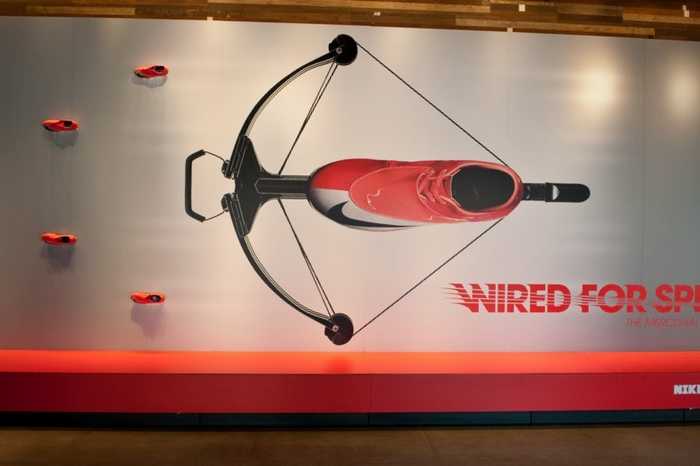- Printing
PrintingOur in-house wide-format printing studio is set up to meet all your printing needs
- Signage
- ECO Range
- Exhibition
ExhibitionOver 40 years of industry experience in helping businesses showcase themselves at exhibitions.
- Outdoor Display
Outdoor DisplayMake the outdoors your own with our range of branding and display products.
- Indoor Display
Indoor DisplayDisplay your promotional material in a professional manner with our indoor display range.
- Notice Boards
Notice BoardsA huge range of fabrics, frames and colours to suit your exact needs.
- Whiteboards
WhiteboardsMassive range of whiteboard styles and sizes available, including our special custom printed whiteboards.
- Vehicle Graphics
- Pavement Signs
Pavement SignsPavement Signs, A Boards, Forecourt Signs & Swing Signs for all your retail display needs.
Directing Customer Traffic: Science or Art?

As soon as a customer walks in to your store, they turn right. Or so we’re led to believe. A widely repeated claim, but is it a myth or reality?
The theory behind it is centred on the majority of people being right handed, therefore tend to reach for things with their right hand, and will be drawn to the right side of any space. This would support the theory that a customer will head right once entering the store.
However, an alternative theory suggests that people shop based on the side of the road they drive on, in the UK we of course drive on the left hand side. Now, you can delve far deeper in to the psychology of what way inclined we are likely to turn, but there are ways of manipulating shopper behaviour in order to achieve the desired results. Having an understanding of these factors can help us anticipate and direct the footfall in order to maximise retail performance.
Product Categorisation
Clearly defined product categorisation plays a big part in dictating the customers’ first move. A monolith or totem sign, often used externally or on the threshold listing the layout of your store gives a visual stimulus to help the customer decide how they will navigate your store. It can be useful to colour co-ordinate them, giving customers a visual stimulus to follow. Customers will then be looking for visual clues to navigate the store, hanging signs are a particularly useful internal solution.
Visual links between the outside and inside are necessary, highlighting the need for consistent branding and signage.

Supermarkets use navigational signage internally to direct customers around the store
Store Position
Most people approach stores from varying angles. They might come in from either direction, and will have a tendency to look at the external fascia on the side of the building they approach from. Factors such as columns, parked cars and other people can block eye-line, so positioning signage at a variety of heights and angles will assist the customer in seeing the initial advertisement and directing them through the door. It can be necessary to repeat the same message across multiple signage. A-boards, chalkboards and window vinyl are different tools to showcasing your message across a variety of sightlines.
Many small retailers don't do window displays, letting customers simply look straight into the shop. That's a mistake, says store design and display consultant Linda Cahan, "just like your eyes are the windows of your soul, store windows are the eyes of the store," she says. "Each window should tell a story."
To create an appealing display, use a single color theme to grab attention and communicate your store's image. It's also important to avoid clutter because in retailing, space equals luxury, Cahan says. If you cram items together in a window, they'll look cheap.
Combine these factors with shoppers’ tendency to turn at 45 degree angles and not turn back on themselves, the likelihood is they will continue walking in the same direction in which they entered through the door.
Position of staff & tills
This varies according to the type of store you have. In service based environments, places such as banks, people will head straight for the counters, making the direction of footfall easy to predict. In browsing environments, clothes stores or supermarkets, people will avoid the counters until they require assistance or are ready to pay. In this case, it’s important to utilise the signage inside to help navigate customers towards key product areas. Supermarkets often use hanging signs, but it’s not always as simple as that. Graphic wallpapers can be a particularly useful tool to attract customers and convey a message clearly. For example, in Nike Town in Oxford Street the majority of the walls have digital printed wallpaper in order to supplement the main product. If the product is football boots, it will be surrounded by life-size imagery of a professional footballer wearing those boots. Creating a memorable impression will slow them down and attract customers to that particular product.

Niketown, London using digital printed wallpaper
There is a lot of data out there that predicts the psychology of a customer’s movement, and studies have shown many to be true. What we can do is utilise signage, colour and imagery to try and manipulate what direction the customer moves, what products they are drawn towards and subsequently improve retail performance.
Have you ever wondered why Tescos stores always have flowers upon entry? Simply because they smell good.
It doesn’t always have to be complicated…
Shop for products >>
For an informal discussion or to learn more about how we can help with you with signage and design, contact us today.
Credit: www.shopworks.co.uk, www.entrepeneur.com
Posted by Rob on October 5th 2015






